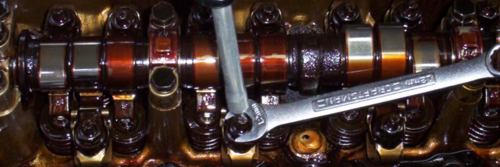Every 60,000 miles or so, we advise to you have us perform a “valve clearance inspection” (also known as a “valve adjustment”). You’ll often see us recommend a valve adjustment in the recommendations at the bottom of your Lowell’s invoice.
But what, exactly, is a valve clearance inspection, and why is it important? (We’re glad you asked!)
Related Posts: What’s a flush? and What’s a cabin air filter?
Your engine’s intake and exhaust valves let air in and out of your engine as it burns fuel. The right mixture of air and fuel can keep your engine running smoothly and ensure that you are getting the best fuel economy from your vehicle.
Wear and stress can cause your valves to slowly get out of adjustment, hurting your fuel mileage and causing your engine to run inefficiently.
Left unaddressed, improperly-adjusted valves can cause your engine run roughly, burn your valves, or even damage your pistons. This kind of damage can be very expensive to repair, because it forces us to disassemble your engine in order to get to the damaged components.
So how does a valve clearance inspection work?
At Lowell’s, we’ll remove your valve covers to measure the clearances of each valve (up to 32 depending on your type of engine).
If we find valves which aren’t within specification, we can often adjust the clearances while we have the valve covers off. Some newer vehicles, however, require much more extensive work to adjust valve clearances. (If that is the case with your vehicle, we’ll call you for approval before we proceed with the adjustment. Just ask us if you have any questions about which type of engine your vehicle has.)
After inspecting your valve clearances, we put your valve covers back on. Because valve cover gaskets are also a major source of engine oil leaks, we’ll also replace your valve cover gaskets during this service.

